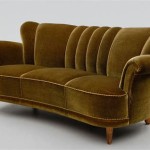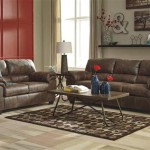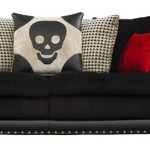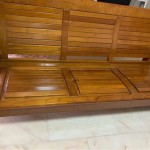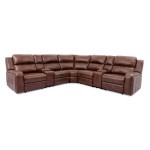Standard Three Seater Sofa Dimensions: A Comprehensive Guide
The three-seater sofa is a staple in many homes, offering a balance of comfort, style, and space efficiency. Understanding the standard dimensions of these sofas is crucial when planning a living room layout, choosing the right model for a specific space, and ensuring it comfortably accommodates the intended users. This article provides a comprehensive guide to standard three-seater sofa dimensions, delving into the various measurements and factors that influence them.
The term "standard" can be misleading, as the dimensions of a three-seater sofa can vary considerably depending on the design style, arm style, back height, and the manufacturer's specific standards. However, there are generally accepted ranges that define what is considered a standard three-seater. These ranges serve as a helpful starting point for anyone looking to purchase a new sofa.
When discussing dimensions, it's important to distinguish between external dimensions and internal seating dimensions. External dimensions refer to the overall size of the sofa, including the frame, arms, and back. Internal seating dimensions refer to the space available for sitting, measured from the inside of one arm to the inside of the other, and from the seat to the back cushions. Both sets of dimensions are essential for assessing the suitability of a sofa for a particular space and user group.
Key Measurement: Overall Width
The overall width of a three-seater sofa is typically the most critical dimension to consider when planning a room layout. It dictates the amount of floor space the sofa will occupy and influences the arrangement of other furniture around it. Standard three-seater sofas generally range in width from 75 inches (approximately 190 cm) to 90 inches (approximately 230 cm). However, some models can exceed these dimensions, particularly those with oversized arms or a more generous design.
A width of 75 inches is generally considered the lower limit for a three-seater sofa, suitable for smaller living spaces or apartments. Sofas in this range may feel slightly more compact but can still comfortably seat three adults. At the upper end, a width of 90 inches provides significantly more space and allows for a more relaxed seating experience. These larger sofas are ideal for larger living rooms where space is not a primary constraint.
The specific design and style of the sofa also influence its overall width. For example, a sofa with rolled arms will generally have a greater overall width than a sofa with sleek, track arms, even if the internal seating width is the same. Similarly, sofas with wide, padded arms will occupy more space than those with slimmer, more minimalist arms.
When measuring a room for a sofa, it is crucial to account for any architectural features, such as doorways, windows, and radiators, that may obstruct the placement of the sofa. It is also important to leave sufficient space for walkways and for other furniture items, such as coffee tables and side tables.
Furthermore, consider the width of doorways and hallways when purchasing a sofa. A sofa that fits comfortably within the living room may not be able to pass through narrow doorways or hallways. Some sofas feature detachable arms or backs to facilitate easier delivery and assembly.
The internal seating width of a three-seater sofa is typically around 60 to 75 inches. This measurement is an important indicator of how comfortably three adults will be able to sit side-by-side. If a primary consideration is comfortably seating three adults, prioritize sofas with a larger internal seating width.
Key Measurement: Depth and Seat Depth
The depth of a sofa, measured from the front of the seat to the back of the frame, determines how far the sofa extends into the room. Standard three-seater sofas typically range in depth from 32 inches (approximately 81 cm) to 40 inches (approximately 102 cm). This dimension is crucial for determining the overall space needed to accommodate the sofa and for assessing its comfort level.
A depth of 32 inches is generally considered a shallower depth, suitable for smaller rooms or for individuals who prefer a more upright seating position. These sofas tend to encourage a more formal posture. A depth of 40 inches, on the other hand, provides a more generous seating area, allowing for a more relaxed and reclined posture. These sofas are often preferred for lounging and relaxation.
Seat depth, measured from the front edge of the seat cushion to the back cushion, is another important factor to consider when assessing comfort. Standard seat depths typically range from 20 inches to 25 inches. A deeper seat depth allows for more legroom and a more reclined seating position, while a shallower seat depth encourages a more upright posture.
The chosen seat depth should take into account the height of the individuals who will be using the sofa. Taller individuals may prefer a deeper seat depth to provide adequate legroom, while shorter individuals may find a shallower seat depth more comfortable.
Back cushion thickness also plays a role in perceived seat depth. Thicker back cushions will effectively reduce the available seat depth, while thinner back cushions will increase it. Some sofas feature removable back cushions, allowing users to adjust the seat depth to their preference.
The depth of the sofa also impacts the overall aesthetic of the room. A deeper sofa can create a more luxurious and inviting atmosphere, while a shallower sofa can contribute to a more streamlined and modern look.
Key Measurement: Height and Back Height
The height of a sofa, measured from the floor to the top of the back frame, influences its visual impact and its suitability for different room styles. Standard three-seater sofas typically range in height from 30 inches (approximately 76 cm) to 36 inches (approximately 91 cm). However, back height, measured from the seat to the top of the back cushion, is often a more relevant dimension for assessing comfort and support.
A lower sofa height can create a more minimalist and contemporary feel, while a higher sofa height can contribute to a more traditional and formal aesthetic. Consider the overall style of the room and the desired visual impact when selecting a sofa height.
Back height is directly related to the level of support provided for the back and neck. A higher back provides more support for the upper back and neck, which can be beneficial for individuals who spend extended periods sitting on the sofa. A lower back provides less support but can be more visually appealing in certain room settings.
Sofas with high backs are often preferred for reading or watching television, as they offer greater comfort and support. Sofas with lower backs may be more suitable for conversation areas or for rooms where maintaining an open and airy feel is a priority.
The height of the arms is another factor to consider. Arm height affects both comfort and aesthetic. Arms that are too low may not provide adequate support, while arms that are too high can feel awkward and uncomfortable. The ideal arm height will depend on individual preferences and the intended use of the sofa.
Furthermore, the leg height of the sofa impacts the overall perceived height. Sofas with taller legs appear more elevated and can contribute to a more spacious feel in the room. Sofas with shorter legs appear more grounded and can create a more cozy and intimate atmosphere.
The overall dimensions of a three-seater sofa are influenced by a combination of these measurements. Consider all factors carefully when selecting the right sofa for the desired space and purpose.
Material choice also subtly impacts dimensions. A sofa with thick, plush cushions might have the same overall dimensions as one with thinner, firmer cushions, but the actual seating space will be affected by the cushion thickness. Similarly, the frame material can impact the overall bulkiness and perceived size of the sofa.
Ultimately, determining the “standard” three-seater sofa dimension depends on a careful evaluation of the available space, desired comfort level, aesthetic preferences, and the specific needs of the individuals who will be using the sofa. Understanding these dimensions is crucial for making an informed purchase and ensuring that the chosen sofa will seamlessly integrate into its intended environment.

Carson Sofa Sofas Singapore Living Room Furniture Sg Bedandbasics
Vimle Sleeper Sofa 3 Seater Dimensions Drawings Com

Share Image Wooden Sofa Designs Furniture Details Design

Sofa Dimensions

Sofa Dimensions For 2 3 4 And 5 Person Couches Charts Diagrams Cushions On Leather Living Room

Buy Garcia Fabric 3 Seater Sofa In Grey Colour At Best Hometown

Romane Three Seater Sofa Solid Wood Fabuliv

Sofa Fabric Estimator Calculator How Much To Cover A

Image Result For Standard Size Of 3 Seater Sofa Layout Dimension Living Room Design Images

Sofa Dimensions


